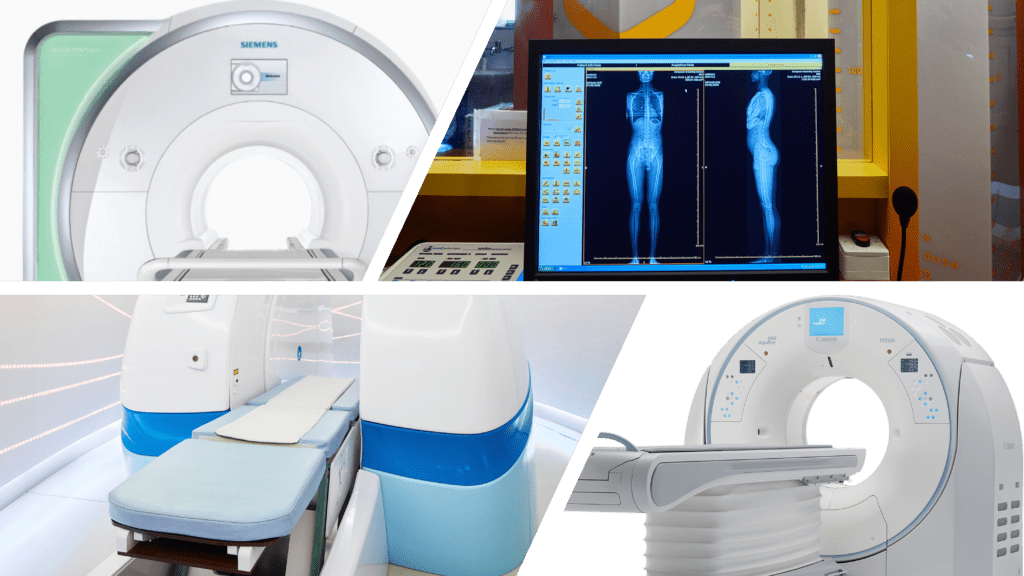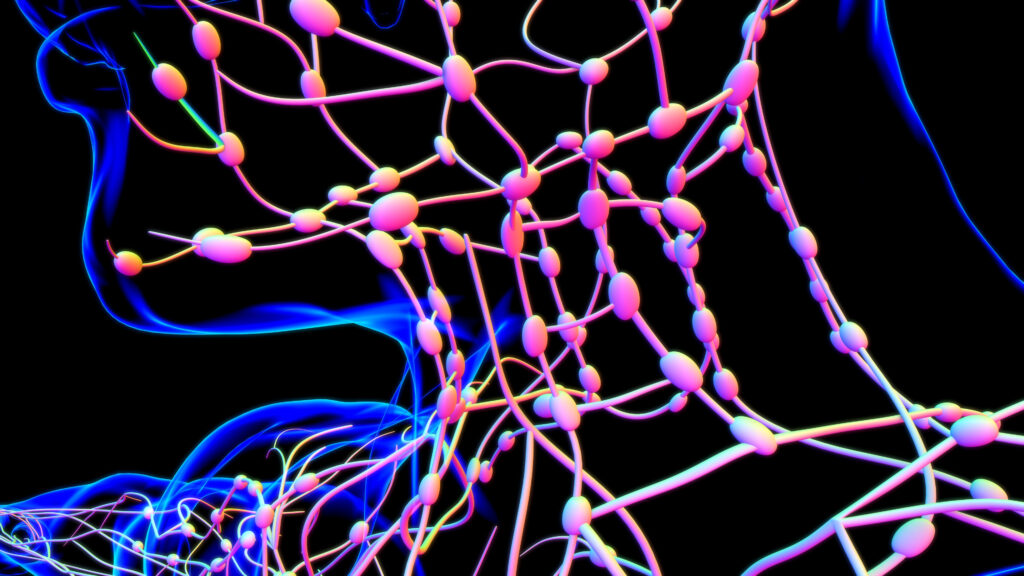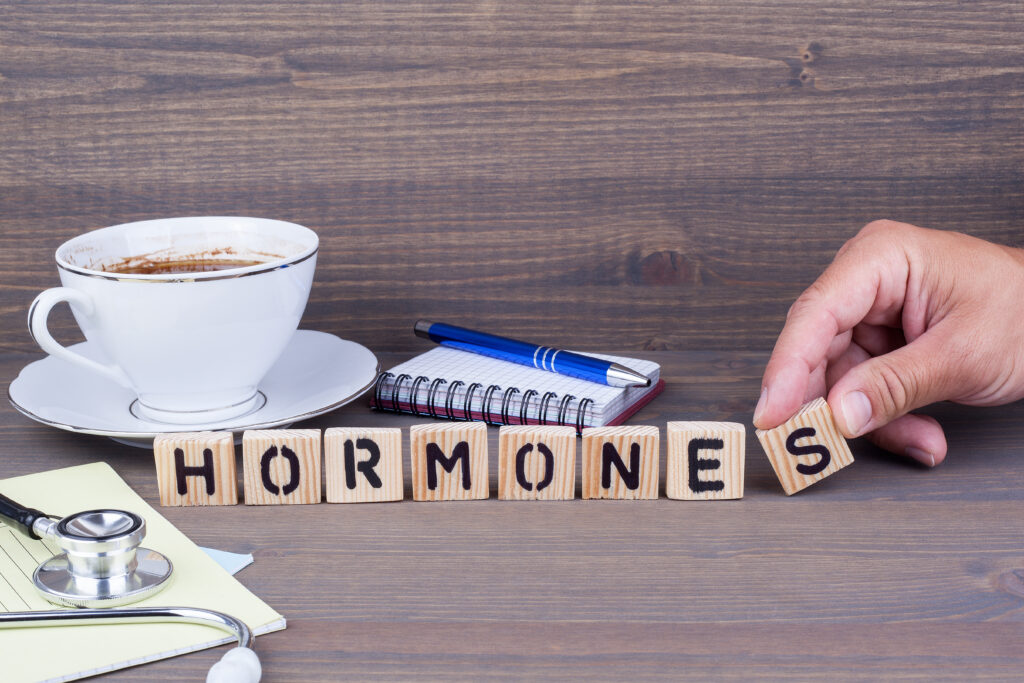There are several differences between MRI and CT scans, though both are used for imaging purposes. To know which imaging modality is more suited for imaging the brain, depends on the examination that is needed. MRI and CT scans are complementary techniques, both with different strengths and weaknesses.
Determining which modality is most appropriate to use depends on several factors including how quickly the results need to be obtained, the part that is being examined, the age of the client and more. All imaging exams should be carried out with a consultation with a doctor.
What is an MRI scan?
MRI stands for Magnetic Resonance Imaging. This machine uses radio waves and strong magnets to create a detailed view of your bones, tissues, and organs. The MRI scan works through a combination of radio waves and magnets to create a detailed view of your organs, tissues and bones. They can be used to detect several diseases or illnesses such as:
- Breast Cancer: Using an MRI tumours in the breast can be easily found
- Tumours: Following certain symptoms, tumours in the rest of your body can be detected using MRI
- Joint abnormalities: Any problems with joints, tendons and ligaments can be easily seen using an MRI
- Blood vessel issues: Issues such as aneurysms or blockages and problems with the blood vessels can be found with MRI scans although a CT coronary angiogram would produce much more accurate and detailed results
- Brain problems: MRI scans can be used to diagnose multiple sclerosis, stroke, aneurysms, and other conditions that can affect the brain
- Inflammatory bowel conditions: Using an MRI scan you may be able to detect colitis or Crohn’s disease
- Bone disorders: MRI allow to look at the soft tissues around the bone and will be able to detect any issues or tumours
- Liver problems: MRIs could detect damage to the liver from any disease or alcohol damage
What is a CT scan?
CT stands for computed tomography. They use x-rays to create numerous cross-sections of your body. These scans are very common in the US with around 70 million scans performed each year (Brenner, 2010).
Usually, CT scans are used to look for any issues in your bones, tissues, brain, and other internal organs. This scan can be used to detect the following conditions:
- Circulation problems: heart disease, blockages in the blood vessels, kidney issues and aortic aneurysms are just some of the problems that can be detected with a CT scan. Specifically, a CT coronary angiogram with a contrast dye is used as the gold standard for detecting various heart disease
- Abdominal issues: problems in the liver, pancreas, colon and kidneys can be detailed using the CT scans
- Lungs: lung disease such as fibrosis, emphysema or lung cancer can be easily detected using CT scans
- Skeletal system: When a regular x-ray is not able to provide enough detail, a CT scan can aid in detecting diseases such as complex fractures, spinal injuries, bone tumours and signs of osteoporosis
- Head problems: blood flow issues, haemorrhaging and brain blood vessel calcification can be seen in CT scans
Differences between MRI and CT scans
There are four key ways that these two scans differ (Sawyers, 2020):
- Speed
CT scans are much quicker than MRI scans. The times differ of course depending on what is needed; however, a typical CT scan lasts about 10 minutes whereas an MRI scan may take up to an hour or more.
- Sound
MRI scans tend to be noisier. Because of this you are given earplugs or headphones to cancel out as much sound as possible.
- Image quality
With current technology both scans can produce extremely high-quality images. However, each scan is better suited for different areas of the body, so to get the most out of these scans they should be used for the right body part.
- Cost
CT scans tend to be cheaper than MRI scans.
Advantages and disadvantages of MRI and CT scans
Below you will find a breakdown of the pros and cons of having an MRI and a CT scan (Rull, 2018; Knott, 2021).
| Advantages of MRI Scans | Disadvantages of MRI scans |
| MRI scans produce better images of soft tissue inside your body | The cost is quite high |
| Does not use ionising radiation | Requires a long time to complete |
| Bigger range of tissue to scan (more soft tissue in your body) | Noisy |
| MRI contrast agents have a smaller risk of causing allergic reactions | Could trigger claustrophobia |
| Rely on precision for best results, patient should be very still | |
| Not the best for clearly detecting cancer |
| Advantages of CT scans | Disadvantages of CT scans |
| More open design | Uses some radiation |
| Does not take long to complete so it is the better choice for trauma or emergency cases | Might not capture enough detail in soft tissues |
| Cheaper than MRI | Should not be used for children |
| Less sensitive to client movement | Contrast agent may cause allergenic effect |
| Great for looking at bones | |
| Can be performed with no risk for clients with implantable medical devices |
What is the right scan for you?
This question does not have a straightforward answer. The scan that is best for you should be discussed with your doctor and what area of the body you need to look at.
The risk factors associated with each scan also come into play as they will be vital criteria when selecting the right scan for you.
MRI scans
While MRI scans pose low levels of risk, they are still not for everyone. The strong magnetic field generate in an MRI may cause issues for people with metallic implants. As always, discuss everything with your doctor and consider that an MRI scan may not be the best for you if you have any of the below (Davis, 2022):
- An IUD
- Artificial joints
- A pacemaker
- Eye implants
- Aneurysm clips
- Shrapnel
- Orthopaedic hardware
- Dark tattoos
Some of these devices may contain iron-based metal and be affected by the magnetic field. Some dark tattoo ink has metals which may also distort the image or otherwise affect the results even if the risk is minimal (Callaghan et al., 2019).
Based on your conversation with your doctor if you have any kidney or heart problems you may need a contrast dye to help with the MRI scan. The dye used is a gadolinium-based product which is well tolerated in people with iodine or shellfish allergies, however some may still have an adverse reaction to the dye.
Those with severe claustrophobia can still get an MRI scan, as there are open MRI designs. Pregnant women have been able to have MRI scans since the 1980s with no negative effects to the mothers or the babies. However, if you need the contrast dye then it may be better to wait until after the delivery of the baby.
CT scans
Modern technology has made CT scans a benign as currently possible, however they still expose you to minor doses of radiation which means not everyone should have a CT scan.
Children are more vulnerable and so should not have CT scans unless absolutely necessary. The contrast dye used for CT scans are riskier so always discuss with your doctor if you should go ahead with it. Pregnant women should also avoid CT scans if possible due to the possible effects for the baby.
Best scans at Echelon Health
One of the main reasons Echelon Health can provide its unique services is because we believe that only by using the right modality for the right area you can achieve the most accurate results.
Consequently, at our disposal we have the best imaging technology currently available:
- Aquilion ONE Prism 640 slice CT scanner: Specialist software unique to the PRISM provides the best image quality performed at low dose radiation. This allows it to scan a 16cm volume with each rotation, covering entire organs such as the heart, brain or whole joints.
- MrOpen upright and open MRI scanner: This unique MRI scanner features Nobel Prize-winning technology. Due to their expense and technological differences, there are currently just a handful of these scanners installed worldwide.
- Siemens 3T MRI (Magnetom Skyra): The 3T Siemens powerful 3T magnet delivers high-quality, clear images making it one of the highest quality MRI exams available today.
- EOS dual-source upright CT scanner: Images from this scanner allow accurate visualisation of the entire spine and major joints (hips, knees, ankles) which enables precise measurement and assessment.
Click here to find out more about these machines and why they are the best for their respective areas. With these scanners, we can detect tumours as small as 2mm and detect up to 92% and 94% of diseases that cause premature death among males and females respectively.
We take a lot of pride in our flagship Platinum Assessment which uses a combination of the best imaging technology mentioned above, specialist radiologists who are experts in their field and using the right scanning modalities for the relevant disease.
The following scans and tests are included in our Platinum Health Assessment:
- Blood Tests
- ECG
- CT Aorta
- CT Heart
- CT Coronary Angiogram
- CT Chest
- CT Pelvis
- CT Virtual Colonoscopy
- CT Bone Density
- EOS
- CT Upright Skeleton
- MRI Brain
- MRI Cerebral Artery Angiogram
- MRI Carotid Artery Angiogram
- MRI Prostate
- Ultrasound Thyroid
- Ultrasound Testes/ Ovaries
- Digital Mammogram
- Full Body Mole Screen
These scans allow us to explore your body in incredible detail and cover not just the main organs of your body (brain, heart, lungs) but also many other areas that you may have not considered a risk.
To find out more information click here to download our brochure or contact our team who is always happy to help!
Sources:
Brenner, D. J. (2010). Slowing the increase in the population dose resulting from CT scans. Radiation research, 174(6b), 809-815.
Sawyers, T. (2020). CT Scan vs. MRI. Available at: https://www.healthline.com/health/ct-scan-vs-mri (accessed 29/03/2022)
Rull, G. Dr, (2018). Magnetic Resonance Imaging. Available at: https://patient.info/doctor/magnetic-resonance-imaging (accessed 29/03/2022)
Knott, L. Dr, (2021). Computed Tomography. Available at: https://patient.info/doctor/computerised-tomography-ct-scans (accessed 29/03/2022)
Callaghan, M.F., Negus, C., Leff, A.P., Creasey, M., Burns, S., Glensman, J., Bradbury, D., Williams, E. and Weiskopf, N., (2019). Safety of tattoos in persons undergoing MRI. New England Journal of Medicine, 380(5), pp.495-496.
Davis, C. P. Dr, (2022). CT Scan vs. MRI Differences between Machines, Costs, Uses. Available at: https://www.medicinenet.com/ct_scan_vs_mri/article.htm (accessed 29/03/2022)



